Photo

Mommy | are you ready for the blackout?
19-year-old Quebecois actor-turned-filmmaker Xavier Dolan presented his first film in Cannes in 2009, a startling semi-autobiographical feature about teen angst - I Killed My Mother. Five years and five films later, the now 25 year old auteur returns to the themes of his debut with an explosive, riveting, borderline excessive operatic punch in the gut of a film - Mommy.
Mommy starts with a bizarre opening where Dolan explains the film is set in 2015’s Canada, where a new controversial law was passed to allow parent to institutionalize their children with prior judicial evaluation. This introduction is the spark that lights the fuse of a bomb that is set to explode in the film’s brutal third act.
Mommy is the story of a problematic and unstable institutionalized teenager (a brutal and unflinching Antoine-Olivier Pilon) who is expelled after an incident where his uncontrollable rage caused a fire and serious injuries to others. His mother (a devastating Anne Dorval, who flickers between stoicism, acute distress and tenderness with frightening ease) is forced to take him back to her home. A widow, she’s now attempting a second swing at living with an unpredictable and unstable bully, who can flip behavior in a matter of seconds: he’s a prankster, then an aggressor, and then he performs an act of undying love. Then all over again. Her temper is similar to his, but her capacity for self-control prevents her from spiraling into his depths of darkness.
Their relationship seems inevitably drawn to tragedy. Throw in some Oedipus complex in the mix, just to make it even more of a twisted concoction. Then, a stabilizing force comes in to their lives, in the form of a depressed and timid high school teacher who has developed a nervous stutter that has rendered her unable to teach. Their larger than life drama is soothed by the presence of this counterpart, and they meet somewhere in the middle. Her calming effect is as if their tornado had finally found a compass.
Driven by stellar performances, Dolan is masterful in creating a tense ambience, keeping an unpredictable and foreboding feel to a story that you know will end very badly from the start. Mommy has the watermark of a great filmmaker - it’s absolutely fearless. Who else but Dolan to create prominent scenes set to the sounds of Oasis, Andrea Bocelli, Celine Dion and Eiffel 65 (yes, really)…
Mostly shot in an unconventional 1:1 Instagram-like ratio, much like the framing device explored in recent times by Andrea Arnold, with a square-ish 1.33 aspect ratio in the also brilliant Fish Tank, as well as in the following Wuthering Heights. But Mommy is a step further in this counter-current movement, both formally and aesthetically - Dolan expertly conveys a constricted and claustrophobic feel that is broken in a few scenes with explosive visual and sensory effect.
Dolan is a consummate storyteller by now, and one cannot help to be excited and wonder where will he go next. He is only 25, still.
Rating 9 out of 10
Mommy (2014) // Director: Xavier Dolan // Writer: Xavier Dolan // Cast: Anne Dorval, Antoine-Olivier Pilon, Suzanne Clément // Cinematographer: André Turpin // Music: Noia
Review by Nuno Sá Montenegro
11 notes
·
View notes
Photo

A very special That Great Escape edition today: our loyal reader from Japan, Magisccare - a true gentleman, sartorialist, Port wine connoisseur, and all round nice guy - spotted this superb Nissan 300 ZX.
This 90's edition of the Fairlady Z is the stuff of dreams. Beautifully styled, and with a V6 twin turbo 300hp engine, this beast is an exotic and great looking sort of synthesis of 1980's signature italian car design, with an unmistakable japanese twist. A very discreet supercar, with an understated but unmistakable appeal.
Designed by Sono & Yamashita in an innovative CAD environment (first production car ever to be drawn that way), it featured some respectable high-end technology, like four wheel active steering. First of it's class in the 1990 24 Hours of Le Mans.
Photo courtesy of Magisccare, exclusive on @thatgreatescape. Follow on instagram!
#cars#nissan fairlady#fairlady z#300 ZX#Drive Tastefully#Thatgreatescapemagazine#that great escape#exotic cars#classic cars#newtimer#youngtimer#japan#car spotting#car porn
2 notes
·
View notes
Photo

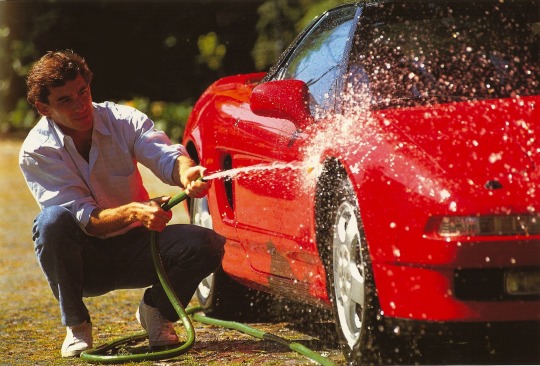





"On a given day, a given circumstance, you think you have a limit. And you then go for this limit and you touch this limit, and you think, ‘Okay, this is the limit.’ As soon as you touch this limit, something happens and you suddenly can go a little bit further. With your mind power, your determination, your instinct, and the experience as well, you can fly very high", Ayrton Senna
Ayrton Senna da Silva would have been 54 today. He was tragically killed in a crash, in a fateful sunny Sunday in Italy, while racing the San Marino Gran Prix, in 1994. I clearly remember watching the events unfold in absolute horror. Senna was my childhood idol. I was only eleven. I remember seeing the crash and feeling he had died, instantly.
Senna seemed uneasy since the start of that season with the new Williams car. That same weekend, Roland Ratzenberger, a very young driver, died in a crash during qualifying. Senna didn’t take it well, and there is video of him in the paddock, looking worried and frightened. Although Senna was a man of God, acquiescent of his mortality, that moment remains the only instance I ever saw true fear in his face.
Senna was the most talented race driver in history. He started as a pure talent, unspoiled by the politics of F1, with an unvanquishable desire for victory. His unbridled lust for speed made him evolve tremendously through the years, season after season, eventually becoming the consummate race car driver, blending instinct with experience and abillty with courage. He posessed a very strong, tipically brazilian, connection with the divine, the mysterious and esoteric, describing many times these elements in his racing. He blended this aspect with some true grit. He beat drivers in sometimes superior cars with unmatched ease, and battled for every turn like it was the last one. His intensity made him a world champion.
Senna challenged the establishment, the very foundations and conventions of race car driving: braking after everyone else, accelerating earlier, pushing the car way beyond the known limits. He shattered record after record, and was the undisputed king of fastest laps. Winning countless races, he became three times World Champion. In the rain, when the F1 cars became almost impossible to handle, before the era of electronics, the road unbearably slippery, the risks are even greater, Senna did what was thought impossible - overtaking cars in the wettest part of the track, stunning everyone with his lighting pace and superb control.
He became a dominant force in the sport as a competitor, but also because of his personality. His brashness and fearlessness made him revered by millions, despite making him somewhat marginalized by the rulers of the sport. His charisma must have startled them.
He elevated the sport to a thrilling spectacle for people of all ages. While at McLaren, he enjoyed the most fascinating rivalry with a pilot. Alain Prost was, despite his constant harsh words toward Senna, and being protected by the governing body of the sport, a worthy and gifted opponent.
Do yourself a favour and watch Senna, by Asif Kapadia. It’s a glorious tribute to a very complex man, that had an unmatchable desire to win, and a heart of gold. May he rest in peace.
Article by Nuno Sá Montenegro.
6 notes
·
View notes
Photo

The Day the Jackal missed - or how the car that fell from the sky* saved a President's life.
Bertoni designed it, Lefèbvre engineered it, Citroën built it. It's La Déesse, the goddess. It was quite possibly the most innovative car in automotive history. Hydropneumatic self-levelling suspension, disc brakes, powersteering, semi-automatic transmission, all so advanced that none were featured in the cars of that day. And all this with the most unique futuristic design that ever made it into production. Truly, a science fiction car. And look at it. It's ravishing.
*as Barthes put it. Read it, it's a glorious essay.
Photos by @thatgreatescape. Follow on instagram!
1 note
·
View note
Photo



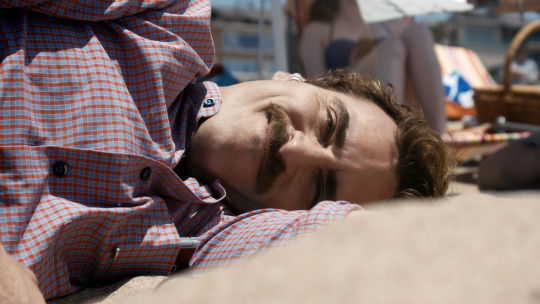
Her - Digital hurts
Joaquin Phoenix is Theodore Twombly. He writes letters on demand for a an online personalized service. He is a sort of loner. His solitude doesn’t come from lack of social skills. He is relatable, quirky, funny and intelligent. He just seems drawn to sadness. His wife left him. They grew up together, and he helped her evolve and change as person and as writer. He didn’t change as much as she did, or he was changing in a different direction. She is now a haunting figure for him. His memory is scattered, he rehashes arguments and aches for his loss.
Theodore’s work implicates a vicarious exploration of other peoples emotions. This makes him, well, emotionally exposed. However, he lives a serene everyday life, shutting off his mind after work, delving into sexual fantasy and numbing video games. While not fulfilled, he finds some solace in this soothing uncomplicated existence. One day, the OS of his digital appliances changes into a new, upgraded, artificially intelligent mode. He gets to choose whether he wants a woman or a man. The upgrade assistant asks him some personal questions to better suit the OS to his persona. Enter Samantha. She is a raspy-voiced, wickedly clever and insightful digital assistant, that quickly becomes a friend, and then a lover.
Spike Jonze writes and directs a sublime film set in a not so distant future, that is able to address a quite unsettling theme with extraordinary lightness, a fresh narrative approach and beautiful and heartfelt dialogue. In Her, people are becoming enamoured with their cell phones. Is the film so futuristic? Have you been to a café lately? But it is also a complex and daring idea: that artificial intelligence could be a life improving, emotionally satisfying and fulfilling romantic relationship. Jonze manages to be provocative and sweet at the same time, without being preachy or too stifled by the original high concept.
We demand three things from technology these days: be helpful, be beautiful and be alluring. Our enhanced social presence is an illusion. We chat, but we don’t talk. We are the curators of our own persona, editing our sentences ad infinitum, letting deceiving camera lenses and forgiving filters tell a constructed and calculated narrative about ourselves. How long until we have a demand for a greater illusion?
Phoenix is instrumental in making the film appealing, given his ability to play a mopey but charming character and make it ultimately relatable. He had done it before with brilliance in the overlooked, but excellent, Two Lovers. But the film wouldn’t be nearly as successful without the astonishing vocal interpretation of Scarlett Johansson, who replaced midway through production Jonze’s original choice, Samantha Morton. She is able to be engaging and believable, a powerful presence. A truly memorable performance from an actress with tremendous depth, once more demonstrating the sexiest woman of something cliched label imposed on her by the studio propaganda, while albeit true, is a gross misrepresentation of her incredible talents.
Rating 8 out of 10
Her (2013) // Director: Spike Jonze // Writer: Spike Jonze // Cast: Joaquin Phoenix, Scarlett Johansson, Amy Adams, Olivia Wilde // Cinematographer: Hoyte van Hoytema // Music: Arcade Fire
#film#Film Review#that great escape#that great escape magazine#Her#Spike Jonze#joaquin phoenix#Scarlett Johansson#oscars
4 notes
·
View notes
Photo


This cute little Californian Mini Moke was supposed to be a military vehicle, but it just couldn’t do much off road work, as it didn’t have enough height, or that much power. So, the British Motor Company decided to make it a leisure vehicle. They were quite spot on there, as it became a phenomenon as a sort of Beach Buggy, especially in places with really nice weather like the Algarve, in Portugal), Australia, and the Caribbean. It was called Austin Mini Moke, Morris Mini Moke and Leyland Moke. It was manufactored in England, Australia and Portugal, and was designed by Sir Alec Issigonis, author of the original Mini.
Photos by @thatgreatescape. Follow on instagram!
#cars#mini moke#alec issigonis#Thatgreatescapemagazine#that great escape#autos#vintage cars#car porn#car spotting#Drive Tastefully
26 notes
·
View notes
Photo

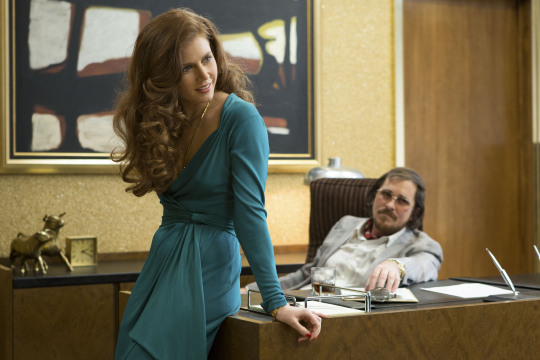

American Hustle – Con hair
Joining Gravity in the race for critical darling of the year, American Hustle comes served to audiences everywhere with the “best film of the year” tag. But, despite the expectations, it’s a bland been there done that experience, quite unsatisfying. It’s like a meal at that Casino restaurant that serves oysters, even though there isn’t an ocean in sight. The decor is flashy, the waiters are impeccable, and there is entertainment while you eat. Maybe, you even feel a little underdressed, considering all the perceived glamour around you. But when the food comes, it’s merely a pale imitation of the real deal. American Hustle is like that. It uses all american favourites: the crime story, the american dream, the reinvention of self, the period piece, with all the accompanying clothes, hairstyles and music. And, of course, a great cast. On one hand, as a homage to the 70’s, it’s no Boogie Nights. It’s a caricatural and empty film, as opposed to the rich, dazzling, original and exuberant Paul Thomas Anderson masterpiece. On the other hand, it’s a misguided and uninspired formulaic crime film, stuck in a narrative and mise-en-scène filled with formalism. It’s has some gangster dressing, sure, even with some heist and caper on the side. All very poorly seasoned. And, on top of all this, it’s got that unbearable odor of made for winning Oscars sauce all over it.
The story follows the main characters of a real-life FBI operation called ABSCAM. The strange story seems like a movie within a movie, a true one, much like last years darling, Argo. The FBI catch a con-man (Bale), who cuts a deal with the arresting agent (Cooper) to catch other con-men by out conning them. There is so much scheming, even the characters are confused sometimes. They end up expanding their operation, entrapping several high profile politicians on corruption charges, by promising millions in investment from a fake Sheik from Abu Dhabi. David O.Russell, director and co-writer of the screenplay, tries to take advantage of the inherited comedic appeal of the true story. However, even the concept of a mexican guy disguised as a Sheik, used as pawn by the FBI to take advantage of either the naiveté or the greed of politicians, isn’t particularly funny. And this was the year of guilt free comedies about white collar crime – see The Wolf of Wall Street. Even blue collar crime got the black comedy treatment in Pain & Gain.
O’Russell, not one to shy away from self-indulging (see I ♥ Huckabees), directs a well behaved and strangely safe pastiche of better films, emulating several Scorsese trademarks, like the slow motion/music compositions, the quick zoom in on the actor, and even some tracking shots. Russell goes all out on trying to seduce the audience, with extended narration that fills the narrative voids, the look at the famous actor with such a strange hairdo and over the top clothing moments, along with the Duke Ellington/Thelonious Monk/Tom Jones/Elton John soundtrack extravaganza. However, without much substance, unlike the aforementioned Boogie Nights, and without the straight up shot of pulp of Scorsese’s classics like Mean Streets, or Goodfellas, American Hustle feels as flat as American Gangster felt some years ago.
The performances, one of the films selling points, aren’t that exciting. Bale and Amy Adams are fine, but the extreme characterization is more parody than method, with the substance lost beneath a toupé, a perm, or the very low cut dresses. Jennifer Lawrence, on a path to Meryl Streep/Judi Dench territory (being nominated for Oscars for showing up on a film), is nominated for every single acting award this year for playing the same character – the neurotic hot mess – she did in last year’s Silver Linings Playbook, pretty much the persona she conveys on red carpet appearences and interviews.
The theme of reinvention is a staple of american cinema, framed within the narrative of the American Dream. Hustle is a lesser imitation of better films. Stick to the classics.
Rating 3 out of 10
American Hustle (2013) // Director: David O. Russell // Writer: David O. Russell, Eric Warren Singer // Cast: Christian Bale, Bradley Cooper, Amy Adams, Jennifer Lawrence // Cinematographer: Linus Sandgren // Music: Danny Elfman
Review by Nuno Sá Montenegro
#film#Film Review#american hustle#David O. Russell#jennifer lawrence#christian bale#oscars#Thatgreatescapemagazine#that great escape
2 notes
·
View notes
Photo


"No electro, no metro, a little retro, ahhhh perfecto".
This short lived 1999 BMW Z8 pretty much sums up the retro tendencies followed by car makers at the turn of the millennium. The Mini hatch and and the NewBeetle were the bait, and BMW surely followed. Credits are due to BMW, as they were smart enough to call their revival model something else. The design and styling were inspired by the the classic BMW 507 roadster, whose author, Henrik Fisker, tried his hand creating his own brand of electric cars.
The 507 is now an extremly rare classic. Intended to be a great commercial success, it that ended up a tremendous flop. Only 252 were made. The Z8 was a success, though, and It seems to have aged well. It was featured in 007 - The World Is Not Enough, with Pierce Brosnan. The Z8 is a ravishing car, but it’s no Aston Martin. James Bond should always drive british cars, to say the least.
Photos by @thatgreatescape. Follow on instagram!
#cars#porto#that great escape#that great escape magazine#bmw#Z8#Fisker#007#james Bond#car porn#vintageautos#autos
1 note
·
View note
Photo



Quite the rare little roadster: this italian cousin of the Toyota MR2 is called Fiat X1/9, seen here with the Bertone badge, who also produced this car between ‘82 and ‘89. Known for being terrific to drive, this Marcelo Gandini designed sportscars was quite popular in its 18 year run. With its sharp lines, the Fiat is very fit for awesome racing modifications.
Photos by @thatgreatescape. Follow on instagram!
#Cars#Thatgreatescapemagazine#that great escape#that great escape magazine#fiat x1/9#Bertone#marcelo gandini#Vintage Auto#vintage cars#classic cars
6 notes
·
View notes
Photo




That Great Escape spotted a seriously gorgeous BMW NeueKlasse, or NewClass, 2002. One of the most popular BMW ever made, this classic was designed by Bertram and Rennen, seen here with the touring internationale headlights. A very sucessful car in rallies and hillclimb, that also won the legendary Nurburgring 24H in 1970. The 1973 Turbo version of the 2002 was the first european turbocharged production car.
Photos by @thatgreatescape. Follow on instagram!
#Cars#BMW 2002#New Class#Turbo#vintage autos#vintage cars#classic cars#Thatgreatescapemagazine#that great escape#that great escape magazine#thatgreatescape
5 notes
·
View notes
Photo






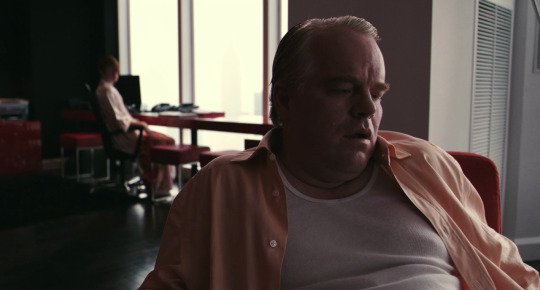

Philip Seymour Hoffman - a most singular man
The passing of this tragically young film and stage actor is devastating. Hoffman had an uncanny ability to balance comedy and drama, sometimes achieving both at the same time. His immaculate body of work is filled with the most exquisite fusion of bravado and minimalism one can possibly fathom. Perhaps the greatest compliment to be paid to him is that maybe no other actor, of our time, commanded so much broad respect and admiration by both the common moviegoer, the cinephile, the directors, his peers and even the critics.
His filmography is inevitable. From his hilariously crafted Sandy Lyle character, a one hit wonder and washed out actor, in an otherwise forgettable Stiller/Aniston romantic comedy, up to Magnolia, a small but pivotal part in Scent of a Woman, and of course, his magnum opus as Capote, Hoffman has given us countless gifts.
Pictured above, some essential performances by this late colossus: Boogie Nights, Almost Famous, Punch-Drunk Love, 25th Hour, Along came Polly, Mission: Impossible III, Before the Devil Knows You're Dead and The Master.
May he rest in peace.
#film#philip seymour hoffman#rip#rip philip seymour hoffman#Thatgreatescapemagazine#thatgreatescape#boggie nights#almost famous#25th hour#along came polly#the master
17 notes
·
View notes
Photo


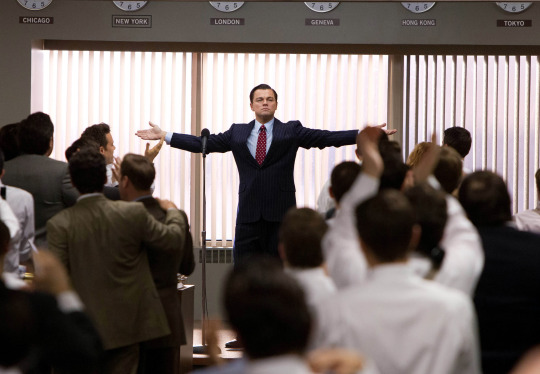

The Wolf of Wall Street - Enjoy watching the party, you’re paying for it
As long as there are suckers, there will always be men like Jordan Belfort. A son of accountants, with a degree in Biology, at the age of twenty-something, this was a man on a mission: to become filthy rich. The easiest way to accomplish that, in the 80’s, seemed to be the Bud Fox method: go to Wall Street. That means, as Matthew McConaughey eloquently puts it, in a film stealing 10 minute performance, “the name of the game is moving the money from the client’s pocket to your pocket”. Belfort soon realizes he has a talent. Selling. That, in Wall Street, is better than a degree. In the real world, we call this called lying and cheating.
That decade is usually seen as the pinnacle of capitalism as a raison d’être. Greed is good, as Oliver Stone puts it in his legendary yuppie critique, Wall Street, one of the most perfect synthesis of a season’s zeitgeist ever put on film. But looking back over the past two decades, one wonders whether the 80’s were merely the beginning. Stock brokers and bank owners, who adore Gordon Gekko, emulate his style, persona and swagger. And they may have taken the obsession with profit, with renovated bluntness, courtesy of the Bush years, to the next level, as the ongoing international financial crisis proves today, everyday.
The real story of Wolf of Wall Street starts in the end of the decade, when Belfort is a young broker at a major firm. The market soon has a tiny stroke, and Belfort goes from young broker to unemployed, then to entrepreneur, selling penny stocks over the phone to everyday Joes. The stocks he sells are so cheap because they are as worthless as the companies they represent, thus they go under the radar of the regulators. The scheme is based on the very high commissions the broker gets for trading them. Belfort, a master at persuasion, trains a small army of hungry frat boys, and ends up creating a major Wall Street player in just a few years.
The film then goes on to depict, without much insight, a seemingly neverending myriad of acts of utter debauchery perpetrated by this group of men-children, that become addicted to the most potent and over the top combination of drugs, sex and money. This was a recurring theme in 2013, considering The Bling Ring, Pain & Gain and Spring Breakers. Of all four, only Spring Breakers is fictional. Coppola’s film is undoubtedly the weakest, and while Spring Breakers didn’t get that much awards attention, it may become the most relevant one in pop culture in the coming years. Michael Bay’s film comes closer to Scorsese’s. That may seem blasphemous for cinephiles, but both films approach relentless criminals who totally disregard all ethical and moral values they may have, for money, without offering much insight or point of view. Now, while Wolf is ultimately successful as very dark comedy, it hasn’t got much more to say about anything else. How much depraved sex with prostitutes, money laundering schemes and near overdose scenes must a film have to prove a point? While Scorsese appears to present a cold gaze on the story, the result is a film that is too light on the subject, offering a manipulative and forgiving look on the main character. DiCaprio is charming enough to make you laugh at just about anything, exception being the moment where he punches his wife on the stomach. Although that may be a true assessment of people’s reaction the real Wolf, it just doesn’t feel right. Watching it in a full theatre, where people were laughing hysterically at the ludicrous true story, without actually realizing that the fuel to the Belfort party was their own money, was disturbing. Even us, in Europe, are paying for the lawlessness of american capitalism.
Many films have walked the fine line of possibly glorifying the immoral stand of the protagonist, with different degrees of success. Scarface is maybe the modern golden standard for these pictures. Trashed by critics when it came out in 1983, lauded as a masterpiece a decade later, nearly escaping the “glorifying by glamorizing” critique. The reason why that may not happen to The Wolf of Wall Street is that it is just plain uninspired. The directing is bland. The kinetic camera movement and luxurious editing of the Scorsese/Schoonmaker director and editor dream team, present in most of his cinema, is nowhere to be seen here. Even the music, a Scorsese staple, feels off. College rock à la American Pie establishes the frat house hedonistic feel of it’s environment, but is beneath a man who has designed some of the most memorable marriages of film and music in american cinema.
The film only proves one thing. As said earlier: “as long as there are suckers, there will always be men like Jordan Belfort”. This man, a convicted criminal who defrauded many, and stole millions of dollars through illegal schemes is now a motivational speaker, charging 2000 dollars for DVD’s. He may be, for lack of a better expression, laughing all the way to bank on your dime, in exchange for a couple of laughs. Was it worth it?
Rating 5 out of 10
The Wolf of Wall Street (2013) // Director: Martin Scorsese // Writer: Terrence Winter, based on The Wolf of Wall Street by Jordan Belfort // Cast: Leonardo DiCaprio, Jonah Hill, Margot Robbie, Matthew McConaughey // Cinematographer: Rodrigo Prieto
Review by Nuno Sá Montenegro
#film#film review#the wolf of wall street#leonardo di caprio#jonah hill#Martin Scorsese#oscars#mathew mcconaughey
3 notes
·
View notes
Photo



Spotted: a BMW Z1, one of the mere 8.000 ever produced.
This instant classic was designed by Harm Lagaayin in such an innovative way, it produced several patents, particularly the very distinct vertically retractable door mechanism. The body was made of plastic, and could be removed entirely from the chassis. It could be driven without it, much like the Pontiac Fiero. Small and lightweight, it featured a 2,5L,170 hp engine, which means it was quick and fun. A curious fact is that this car had no AC, due to a lack of space. Since It's a convertible, it's all right, as long as its summertime.
Photos by @thatgreatescape. Follow on instagram!
#cars#bmwZ1#bmw Z1#Z1#BMW#Bimmer#classic cars#vintage autos#exotic cars#autos#that great escape#Thatgreatescapemagazine#that great escape magazine
1 note
·
View note
Photo


One of the finest classic British spiders was the MGA 1600 mkI, by the British Motor Corporation. It was quite popular because of it’s excellent styling, back in the 50’s and 60’s.
Elvis Presley had a wonderful scene, singing of course, in one of these, in the romantic comedy Blue Hawaii, with Angela Lansbury. The King was so enchanted with it, he even bought one for himself. This very model was also seen in the classic comedy Animal House, directed by John Landis, with the late John Beluschi. You may have seen it also in the exploitation masterpiece Faster, Pussycat! Kill! Kill!.
Photos by @thatgreatescape. Follow on instagram!
#cars#Thatgreatescapemagazine#that great escape#that great escape magazine#MG#car porn#classic cars#Elvis Presley#Blue Hawaii#Animal House#faster pussycat kill kill#autos#vintage autos#Drive Tastefully
0 notes
Photo
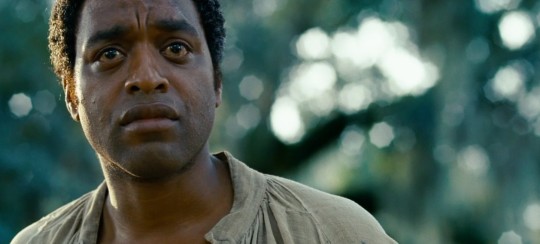
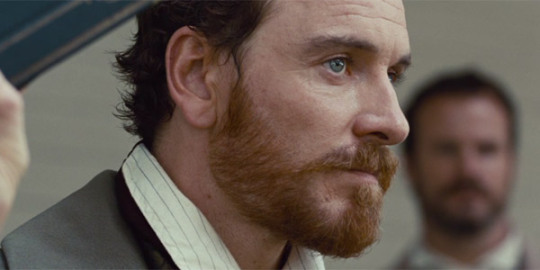


12 Years a Slave
Based on the true story of Solomon Northup, a New York-state born free black man who was kidnapped and sold into slavery, Steve McQueen, a Turner prize winning video artist turned film director, presents an extremely powerful firsthand account of the brutality and indignity of slavery. Some might describe the experience of watching as somewhat difficult. That, in many ways, is a testament to the vitality and significance of the film. It wouldn’t be honest if it wasn’t painful.
McQueen shows not only the brutality of the physical punishment, but a how slavery was foremost a form of psychological horror, encompassing a rare composition of absolutes, a repression system built upon hatred, the law, and of course, religious belief. Christianity, through the scriptures, is used by slave owners as a justification for the subjugation of black people. This self-righteous worldview is evoked by both a less cruel stripe of slave owners, but also by the more brutal ones. The film daringly depicts extremely complex relationships between master and slave, master and enforcer, enforcer and slave, and amongst the slaves themselves.
The performances in the film are nothing short of astounding. Chiwetel Ejiofor has a poise and dignity, a sort of Sidney Poitier-like presence, that is deeply touching. Newcomer Lupita Nyong’o is gut-wrenching. Fassbender, who has been in all three McQueen films, is completely terrifying, playing with a disturbed, twisted and revolting psychopath not as a character, but as a fact.
Quite certainly, the most important film of the year that deserves the perennial audience it will surely get. Experiencing it in a half-full commercial film theatre was a true testament to how compelling the film is - there was total silence. Viewers were not checking their phones, or eating popcorn. They were either crying, or trying not to.
A defining piece of cinema about one of the darkest chapters of recorded history.
Rating 10 out of 10
12 Years a Slave (2013) // Director: Steve McQueen // Writer: John Ridley, Twelve Years a Slave by Solomon Northup // Cast: Chiwetel Ejiofor, Michael Fassbender, Lupita Nyong’o, Benedict Cumberbatch, Paul Dano, Brad Pitt // Cinematographer: Sean Bobbitt // Music: Hans Zimmer
Review by Nuno Sá Montenegro
#film#film review#12 years a slave#Michael Fassbender#chitewel ejiofor#steve mcqueen#oscars#Thatgreatescapemagazine#that great escape#that great escape magazine
5 notes
·
View notes
Photo

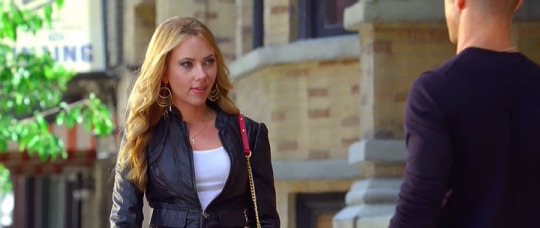

Don Jon - sins and misdemeanors
Don Jon is a romantic comedy about the different expectations of men and women in sex and love. There are, of course, many books, plays and films about this. The so-called romantic comedies. Shakespeare wrote a couple. His famous A Midsummer Night's Dream was loosely adapted by Woody Allen, a couple of centuries later, who is also known for writing a few of his own. Before Allen (but after Bill Shakespeare, that is), so did Hawkes, Lubitsch, Sturges, and many others. Nowadays you may see in theatres an Apatow version, more about bromance than romance, and some shades of toilet humour in the mix. While usually formulaic, romantic comedies always seem to find an audience somewhere. That audience would be Scarlett Johansson’s character in Don Jon, Barbara Sugarman, a bubble-gum chewing half temptress, half pain-in-the-ass, and very high maintenance girlfriend. Her whip cracking/sex kitten attitude comes from the fact that society has always told her she’s a 10 out of 10, as Jon puts it “a dime”. And she happens to love romantic comedies, especially the sacrifices the leading man endures to please the leading lady, who is, almost always, the perfect woman. Scarlett is absolutely brilliant looking and feeling like a New Jersey self-entitled hot girl with an attitude.
However, the center of the film is the titular character, played by actor turned writer/director Joseph Gordon-Levitt. Jon, the Don, is a gym-tan-laundry kind of guy, whose look and demeanor are basically lifted from The Situation, a colourful reality TV star in the controversial MTV show Jersey Shore, a ratings sensation back in 2009. He is methodical in life, from his spotless clean house, to his workouts, religious devotion and sexual rituals. Nothing about this is particularly notable as far as romantic comedies go, but the main attraction here is Jon’s brutally honest views about women, sex and porn (internet porn, that is). Condoms are terrible, women are not nasty enough, and nearly not as generous as he would like them to be. Basically, staring at a screen is more appealing the real thing, because there he is liberated from expectations. These views may all be wrong, or at least largely magnified and twisted by the aesthetics and ethos (and pathos, actually) of internet porn, a neverending goldmine for procrastinators, that may turn your regular horny person into a full blown addict. Along with the opposing moral judgments brought on by Barbara, unwilling to look beyond her romanticized view of her idealized Ken doll boyfriend, who she hopes to turn into a man with a career, all these issues are definitely worth the debate the film suggests, without being preachy or too morally compromised.
While no masterpiece, and quite uneven at times, it’s an excellent first turn for the veteran actor turned auteur, delivering a seriously sexy and smart film.
Rating 6,5 out of 10
Don Jon (2013) // Director: Joseph Gordon-Levitt // Writer: Joseph Gordon-Levitt // Cast: Joseph Gordon-Levitt, Scarlett Johansson, Julianne Moore, Tony Danza // Cinematographer: Thomas Kloss // Music: Nathan Johnson
Review by Nuno Sá Montenegro
#Film#Film Review#don jon#joseph gordon-levitt#Scarlett Johansson#tony danza#review#hitrecord#hit record#movie review#movie#Thatgreatescapemagazine#that great escape#that great escape magazine
3 notes
·
View notes
Photo
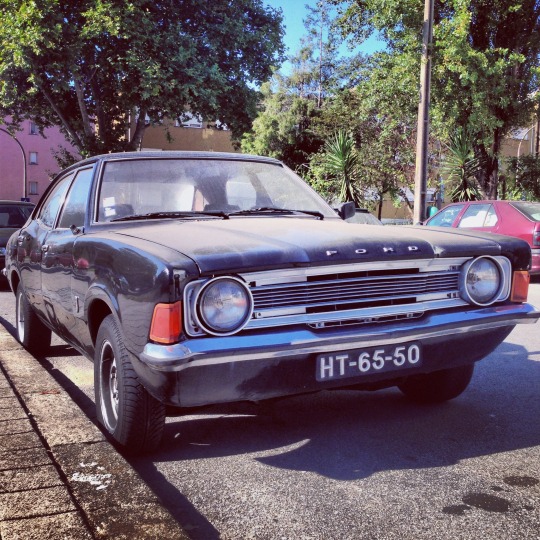


Spotted: a lovely 1970's Ford Cortina mkII. Seemed in pretty good condition, especially for a car known to rust very easily. Made especially for the european market by For, this model is styled pretty much like an american coupe, considering the type of body and design, conceived to serve as a family oriented car.
Photos by @thatgreatescape. Follow on instagram!
#cars#Ford#Cortina#Thatgreatescapemagazine#that great escape#autos#vintage autos#classic cars#car spotting
0 notes